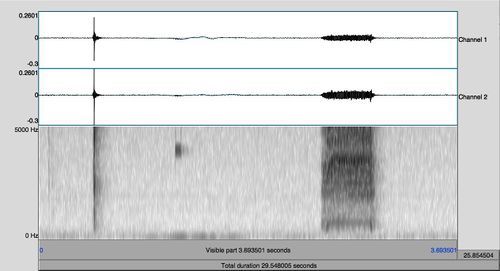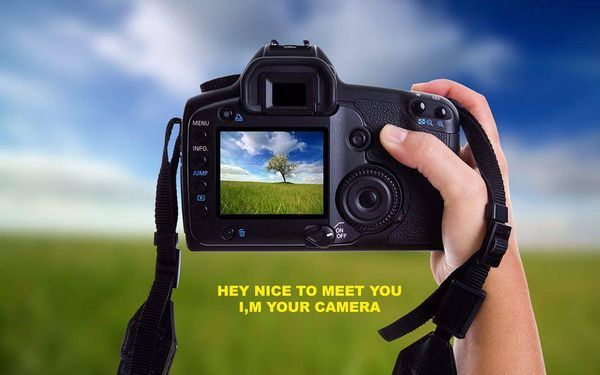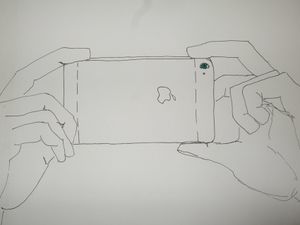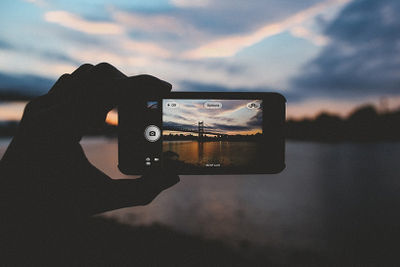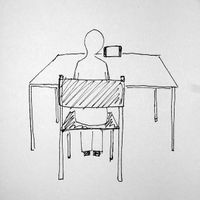FINAL UTC PROJECT
Contents
Project Theme
Our project revolves around the theme of photography and the digital image. The aim is to enable the audience to experience and explore photography and digital technology on a personable level - to enhance our understanding of how it works.
RESEARCH
After developing an understanding of the basic components of a digital image (pixel element), and digital sound/audio we became interested in the conversion and translation of sound and image.
"I am an eye. I am a mechanical eye. I, a machine, I am showing you a world, the likes of which only I can see" Dziga Vertov - 'WE: Variant of a Manifesto' 1919 [1]
“We consume images at an ever faster rate...images consume reality.” - Susan Sontag - 'On Photography'
'my camera seems to recognize people', 2015, 3 channel video installation by Belit Sag - 'discusses the imaginable and unimaginable, the audible and muted, ethics and aesthetics, distance and involvement; it is an exercise in curiosity, going after what is visible and audible in the frame, and what is, simultaneously, escaping it.'[2]
Field Research
Our field research observed the habits and components of the action of taking a photograph. The movement when taking a photo was notable, combined with the frequency, and subject matter etc.
Experiments/Tests
Camera talk - how can we represent a conversation from the camera's perspective? This audio piece records the noises produced by a camera - displayed also as a spectrogram which created a connection with the human voice.
Research Question
What is the relation between a camera and its user? How can we empathise with the camera's perspective? (What is the relationship between me and my camera?)
PROJECT
Plan/Concept
Our project consists of three elements : text, visual and audio
Text: The content of the text will reflect on the research question. It will be written from the perspective of the camera. However, this will be ambiguous. The text will be fragmented and in a non narrative format.
Visuals: The visuals are unclear at this point as they depend on the text content and themes. They will however be in the format of an image or video.
Audio: The audio will be a composition of camera sounds (shutter sound, peeping, focussing/ autofocus, clicking) with deliberate intonation to mock the flow of human conversation.
Design
Text: In the form of subtitles ( yellow )
Visuals: The visuals will depict a display sized video on normal sized screen. The display sized screen will be outlined and in focus - the boarder will be out of focus.
Audio: The audio will be played from the device the screen is part of.
Plan Technical Execution
The video will be produced in Final Cut and Premiere as well as the sound and text.
Plan Exhibition Presentation
The aim of the project is to make the camera a relatable object. In order to induce a sense of intimacy the audience will have to be able to interact with the piece on an eye to lens level. This will be aided by the use of perhaps a table and chair setting with the screen on the wall/desk.
Sharpened Plan
After we started to write on the text, we noticed that it was really important to concentrate on one device. So we chose to concentrate on the iPhone camera - "the most popular camera in the world" as defined in an iPhone advertising.
brainstorm iPhone camera
shutter sound effect
mirror selfies showed user and iPhone. mirror is overdue because of 2nd camera - used as mirror.
constant fear of losing your phone. panic when you've lost it.
phone remembers everything. where and when the picture was taken and who's on it. the task of remembering is yielded to the phone.
Observations/ field research on movements when taking a photo:
- searching in bags/pockets
- walk-stop-take photo-control-walk
- looking through screen/display and never look back on the real motif
- eyes are glued to the screen
- landscape: 2 hands, portrait: 1 hand
- the bigger the screen the more the people bend behind
- experience reality through screen: need of documenting/collecting memories. proof that you have been there. share it.
keeping Dziga Vertov at the back of the iPhone's mind
"The machine makes us ashamed of man's inability to control himself, but what are we to do if electricity's unerring ways are more exciting to us than the disorderly haste of active men and the corrupting inertia of passive ones?"
"For his inability to control his movements, WE temporarily exclude man as a subject of film."
"We cannot improve the making of our eyes, but we can endlessly perfect the camera."
"Until now, we have violated the movie camera and forced it to copy the work of our eye. And the better the copy, the better the shooting was thought to be. Starting today we are liberating the camera and making it work in the opposite direction - away from copying."
"The weakness of the human eye is manifest. We affirm the kino-eye, discovering within the chaos of movement the result of the kino-eye's own movement: we affirm the kino-eye with its own dimensions of time and space, growing in strength and potential to the point of self-affirmation."
"I am an eye. I am a mechanical eye. I, a machine, I am showing you a world, the likes of which only I can see." [3]
CONDENSED PLAN
videoinstallation video displayed on an iPhone. the phone is talking while one can see a sequence of "iPhone-perspective-photos" - 2 "layers" of iPhones. https://www.youtube.com/watch?v=ZlRI_QzQJFQ&feature=youtu.be
presentation sketches
FINAL PLAN
The iPhone camera and its features play a huge role in the popularity of the iPhone. The convenience of having a camera in one's pocket at most times has encouraged the concept of capturing and storing a memory (no matter how momentous the moment is). Thus, the iPhone really has become part of the individual. In effect, we're sharing these moments with our phone's.
Our project has become more focussed on a users reliance on the iPhone in order to experience a memorable moment.
We have created a short photography series that explains and emphasises the dependence one has on looking at the world through their iPhone camera. The photography will be accompanied with audio. The audio narrates the iPhone's perspective.


